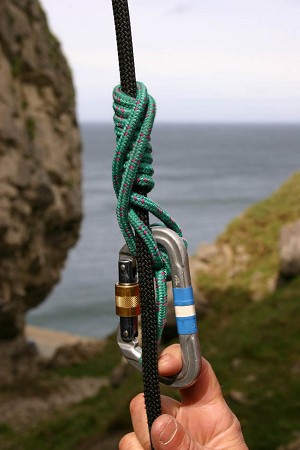
The most basic problem-solving skill is the ability to lock off the belay device so that you can get both hands free. Once you can do this task efficiently you will be able to buy yourself some time to work out what to do next.
If the person you are helping is actually hanging on the rope, this is an essential skill unless it is possible to simply lower them to the ledge or the ground without fear of snagging up on a tree or spike on the way down. Tying off a belay plate requires care to prevent fumbling at a critical moment; it is worth practicing this technique in a safe situation where the rope is loaded but the climber is only a few centimetres above the ground.
Basically a loop is pushed through the belay karabiner and then locked by pushing another loop through the first.
This is finished with another half-hitch, ideally leaving the live rope uncluttered with any knots. It is possible to release this system once you have solved any problems but take great care to prevent the loops unzipping while you are releasing them.
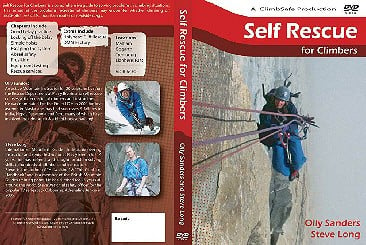
Self Rescue for Climbers DVD
Aimed at recreational climbers, Self Rescue for Climbers is a comprehensive guide to solving problems encountered in such situations as multi pitching in the mountains, sea cliffs or roadside crags. The DVD's format enables the viewer to access relevant information quickly, providing a basic toolbox of techniques which can be applied in any situation.
With scenarios filmed on famous climbs in locations including Malham, Gogarth, the Llanberris Pass and Tremadog, Self Rescue for Climbers is not only 90 minutes of expert instruction, but also a stunning tribute to the possibilities available to the recreational climber in North Wales.
Buy here from www.safetysteve.co.uk
- REVIEW: North Wales Limestone - the Definitive Guide 30 Jun, 2023
- REVIEW: North Wales Limestone 22 Sep, 2014
- Thermo Half Zip from Marmot 18 Sep, 2013
- REVIEW: Mammut RescYou Crevasse Rescue Device 19 Mar, 2013
- Metolius Contact Training Board 23 Jan, 2013
- WC Ropeman #2 - Ascending from Free-hanging 17 Oct, 2012
- COMPARISON REVIEW: Lightweight Alpine Mountaineering Boots 4 Oct, 2012
- Wild Country Ropeman How To #1 - Ascending the Rope 2 Oct, 2012
- REVIEW: DMM Alpha Trad Quickdraws 24 Sep, 2012
- Montane Medusa 32 Rucksack 24 May, 2012



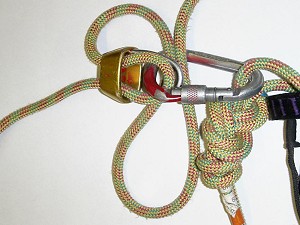

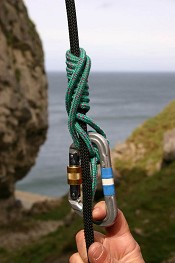
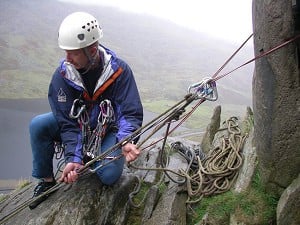
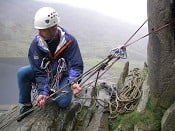
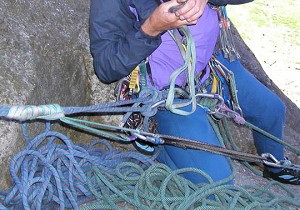
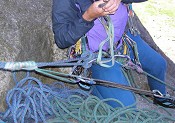








Comments